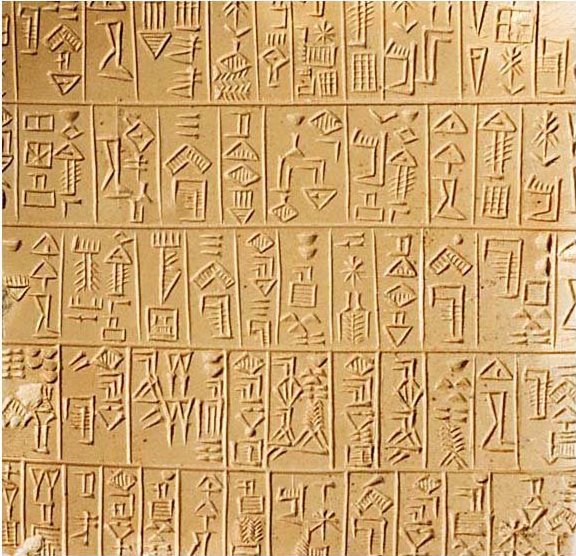.
Sense life's
expense of spirit
in a waste of shame's
oh maybe fifteen cents
and can't spare it --
ah lighten up, it happens
without spending experience
value doesn't apply
expense of spirit
in a waste of shame's
oh maybe fifteen cents
and can't spare it --
ah lighten up, it happens
without spending experience
value doesn't apply
Mayan stucco glyphs, Palenque, Mexico: image by Kwamikagami, 2004
Sumerian inscription, 26th c. B.C. Text: "Gifts from the High and Mighty of Adab to the High Priestess, on the occasion of her election to the temple" (with list of gifts)


A mouse-kiss on the hieroglyphs from the Palace of Palenque, Chiapas, Mexico, will deliver the full story.
ReplyDeleteCf. Charles Olson, writing to Robert Creeley, from Lerma, Yucatan, on March 28, 1951: "...it is necessary to separate the glyphs from the use they were put to, that is, no argument, that the major use was, to record in stone the investigations by the learned of time & planets, but -- because the stone has stayed, while another use -- for books, painted, or written with a brush -- has mostly disappeared, there is no reason not to come in quite fresh from the other end, and see the whole business of glyphs as, 1st, language, and afterward, uses of same//and it is the fact that the glyphs were the alphabet of the books that puts the whole thing back to spoken language. Or so it seems to me, this morning." (from Mayan Letters, 1951)
I've just been reading the Mayan Letters. This is wonderful.
ReplyDeleteThanks, Marcia. I think for Olson, seeing those glyphs, and going where he had to go to see them, was a world-rocking event. Not in books in the reading room of the library but here in a stone that was itself the thing, he found for the first time a poetic language not abstract but substantial and tangible, with mythic beings and animals and the planets and the stars written into it. Surely this revelatory discovery brought with it a breathtaking expansion of perspective for him.
ReplyDelete...on the other hand, what is this poet trying to say here, in this poem? It seems to be a poem about a kind of grim totting-up of experience and about an economy in expending oneself and then maybe about an expanding of that economy to advance beyond the grim totting-up and the sense of waste. Are the images then his way of projecting a kind of cosmic theatre in which this narrow little accounting plays out? And how does he thence arrive at "value"?
ReplyDeleteOr could it be the Mayans and the Sumerians in fact invented their writing systems primarily to transact just such tottings-up, on a grand mythic as well as concurrently a small scale of quantities of goods and household economies?
(Large thoughts in the the night about a poem probably too small to bear the weight... though the photographic images, they're something else again... the aim as always was just to get the words and the images to begin talking...the post being the record of their conversation.)
It does not apply, I agree, it is like trying to add apples and oranges, nothing usefull will come out of it.
ReplyDeleteLove TC
Mariana,
ReplyDeleteYes, I think that's what's called "the long and the short of it".